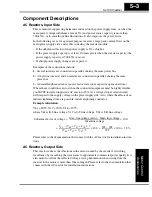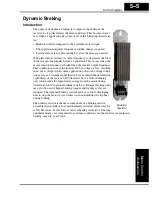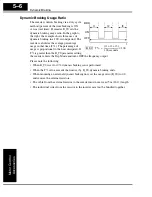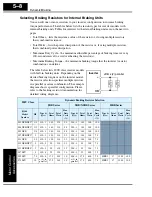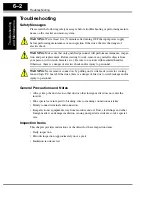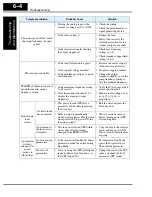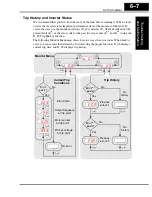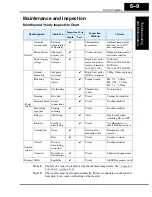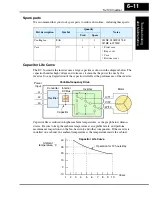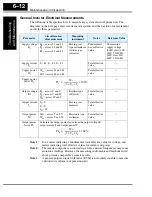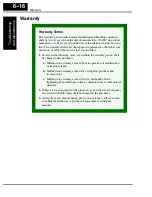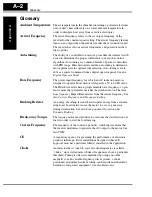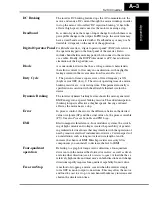
SJ100 Inverter
T
roub
leshooting
and Maintenance
6–5
Monitoring Trip Events, History, & Conditions
Fault Detection and Clearing
The microprocessor in the inverter detects a variety
of fault conditions and captures the event, record-
ing it in a history table. The inverter output turns
OFF, or “trips” similar to the way a circuit breaker
trips due to an over-current condition. Most faults
occur when the motor is running (refer to the
diagram to the right). However, the inverter could
have an internal fault and trip in Stop Mode. In
either case, you can clear the fault by pressing the Stop/Reset key. Additionally, you can
clear the inverter’s cumulative trip history by performing the procedure
Factory Default Settings” on page 6–8
(setting B_84=00 will clear the trip history but
leave inverter settings intact).
Error Codes
An error code will appear on the display automatically when a fault causes the inverter
to trip. The following table lists the cause associated with the error.
RUN
STOP
RESET
STOP
RESET
Run
Stop
Trip
Fault
Fault
Error
Code
Name
Cause(s)
E 0 1
Over current event while
at constant speed
The inverter output was short-circuited, or the motor
shaft is locked or has a heavy load. These conditions
cause excessive current for the inverter, so the
inverter output is turned OFF.
The dual-voltage motor is wired incorrectly.
E 0 2
Over current event during
deceleration
E 0 3
Over current event during
acceleration
E 0 4
Over current event during
other conditions
E 0 5
Overload protection
When a motor overload is detected by the electronic
thermal function, the inverter trips and turns OFF its
output.
E 0 6
Braking resistor overload
When the regenerative braking resistor exceeds the
usage time allowance or usage ratio, the inverter trips
and turns OFF its output to the motor.
E 0 7
Over voltage protection
When the DC bus voltage exceeds a threshold, due to
regenerative energy from the motor.
E 0 8
EEPROM error
When the built-in EEPROM memory has problems
due to noise or excessive temperature, the inverter
trips and turns OFF its output to the motor.
E 0 9
Under-voltage error
A decrease of internal DC bus voltage below a thresh-
old results in a control circuit fault. This condition can
also generate excessive motor heat or cause low
torque. The inverter trips and turns OFF its output.


